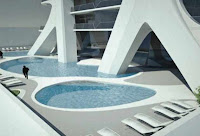Happy New Year, and Welcome to 2014!
Thomas Edison might roll over in his grave, but the experts say the rest of us should rejoice! The reason? The incandescent light bulb is on its way out.As with 100-watt and 75-watt lamps (which were phased out last year), it is now illegal to manufacture 60-watt incandescent bulbs - or to import them into the United States. While some people have little or no strong feelings either way, there are those who are wholeheartedly in favor of the new law, and others who are adamantly opposed.
View our exclusive Guide to Energy Efficient Lamps, which outlines all the costs factors to consider before you make a purchase.
The Law: Energy Independence and Security Act of 2007
Light bulbs from 40 watts through 100 watts must be 25% more efficient, by the following dates:
- January 1, 2012 for 100 watt bulbs
- January 1, 2013 for 75 watt bulbs
- January 1, 2014 for 60 watt bulbs
- February 28, 2014 for 40 watt bulbs
Since most current incandescent lamps do not meet this standard, this effectively bans them as of the above dates.
CFL's - Compact Fluorescent Lamps
At about $4.00 a pop, compact fluorescent lamps are about four times more expensive than standard lamps. Those cute little curly shaped CFLs do last longer and will save you a lot of money...
But, if the bulb is broken, they can create a hazardous waste nightmare in your home. And while they do come with a disposal warning label - few people read a warning label on a light bulb. Furthermore, many of the CFL’s made in China can start a fire when the ballast burns out.
But, if the bulb is broken, they can create a hazardous waste nightmare in your home. And while they do come with a disposal warning label - few people read a warning label on a light bulb. Furthermore, many of the CFL’s made in China can start a fire when the ballast burns out.
Recent studies have linked CFL lamps to a number of health problems including fatigue, eye strain and migraine headaches, and if broken, compact fluorescent are hazardous to your health. Some manufacturers have started to label their boxes with warnings on how to deal with a broken bulb. In fact, some states will now require that you recycle these bulbs at special facilities because of the large amount of mercury contained in each bulb.
The problem is the toxic mercury inside and which poses a big problem for landfills and if the bulb breaks, for homeowners.
LED lamps are brighter, don't flicker, don't require special handling, and last up to fifty times longer than incandescents!
What's more, they use even less energy than hazardous compact fluorescent bulbs.
A LED 60-watt equivalent lamp puts out as much light as a 60-watt incandescent bulb, but uses only one-tenth the power. Plus, it can burn for 11 years.
What's more, they use even less energy than hazardous compact fluorescent bulbs.
A LED 60-watt equivalent lamp puts out as much light as a 60-watt incandescent bulb, but uses only one-tenth the power. Plus, it can burn for 11 years.
Sure, LED's will cost more than a standard bulb. But because they last so much longer and save so much more in electricity costs, they more than make up for it in less than a year's usage.
 View our exclusive Guide to Energy Efficient Lamps, which outlines all the costs factors to consider before you make a purchase.
View our exclusive Guide to Energy Efficient Lamps, which outlines all the costs factors to consider before you make a purchase.
60 Watt Incandescent Light Bulbs Are Still Available... For Now
Many have already embraced the new light bulbs, while others will use the old fashioned bulbs as long as they possibly can. Americans are stockpiling 60-watt incandescent lamps for their own use. As the deadline has passed, it's only logical that the price of these lamps will increase as the available supply decreases.
































